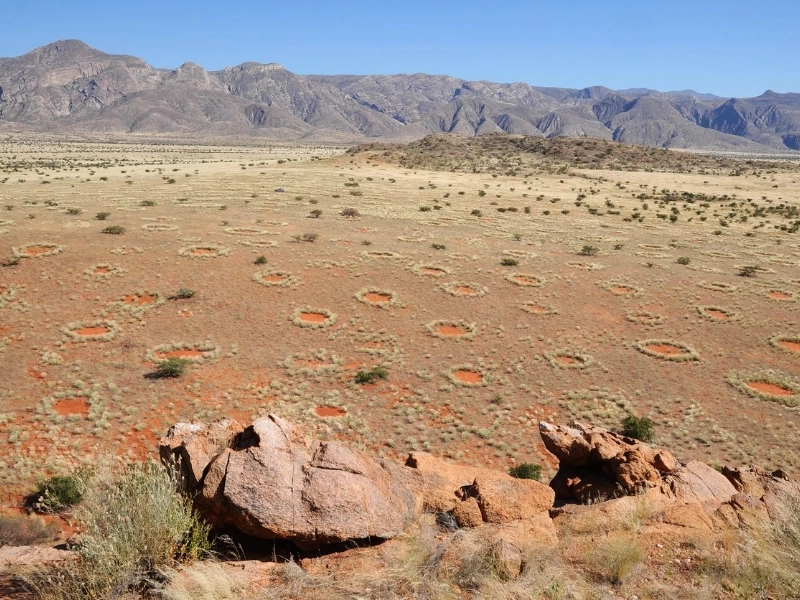10 Geological Oddities That'll Blow Your Mind (and Maybe Your Geography Teacher's Too!)
Advertisement
4. Fairy Circles: Namibia's Mysterious Desert Patterns

Advertisement
For decades both scientists and tourists have been enthralled with an unusual and captivating occurrence in the dry landscapes of the Namib Desert, which stretches over Namibia and areas of Angola and South Africa. Often referred to as "fairy circles," these absolutely spherical areas of bare ground form a hypnotic polka-dot pattern across large swaths of the desert when encircled by rings of tall grass. From above, these circles—which range in diameter from two to fifteen meters—form a homogeneous hexagonal pattern that gives the area an alien look that has inspired many ideas and legends regarding their source.
For years, the fairy rings of Namibia have been the focus of much scientific discussion and study with several theories put out to explain their genesis. Among local people, folklore was one of the first and most often used justifications. Some indigenous people held that these circles were the footsteps of gods or the work of underground dragons whose flaming breath produced the arid areas. Scientists have been working nonstop to find the actual processes behind this natural beauty, even while these legendary stories grab the imagination.
Among the most accepted scientific hypotheses is that termite activity causes fairy circle development. Advocates of this theory contend that by eating the roots of plants in a circular arrangement around their nests, species of sand termites—especially Psammotermes allocerus—cause these naked areas. The action of the termites removes vegetation from the ground, which lets water gather in these places during infrequent rainfalls. Then this stored water feeds the nearby grasses, producing the characteristic ring of rich flora around the bare area. This idea holds that competition among nearby termite colonies for supplies produces the consistent distances between the circles.
Still, the termite theory has its detractors. Although termite activity is certainly prevalent in many fairy circles, certain studies note that it is not always seen in all of them. Moreover, similar circular patterns have been seen in areas of Australia devoid of these particular termite species, implying that other or different processes could be involved.
Still another well-known idea emphasises plant competitiveness for limited water supplies. This self-organizing theory suggests that plants vying for water in the parched surroundings create the rings. Stronger plants near the perimeter of the circles outcompete and stop the spread of vegetation in the centre, therefore producing the bare patches according to hypothesis. The extra water that gathers in the bare ground then helps the surrounding ring of plants, therefore perpetuating the pattern. Computer simulations have demonstrated that this kind of rivalry can in fact produce trends like of those seen in the Namib Desert.
Recent studies point to a mix of these elements as perhaps the truth's hiding place. According to a thorough 2017 publication, fairy circle development and maintenance are influenced by termite activity as well as plant competition. This dual approach proposes that termites may start the process by removing vegetation, while plant competition for water supplies preserves and strengthens the pattern over time.
Advertisement
You May Like

